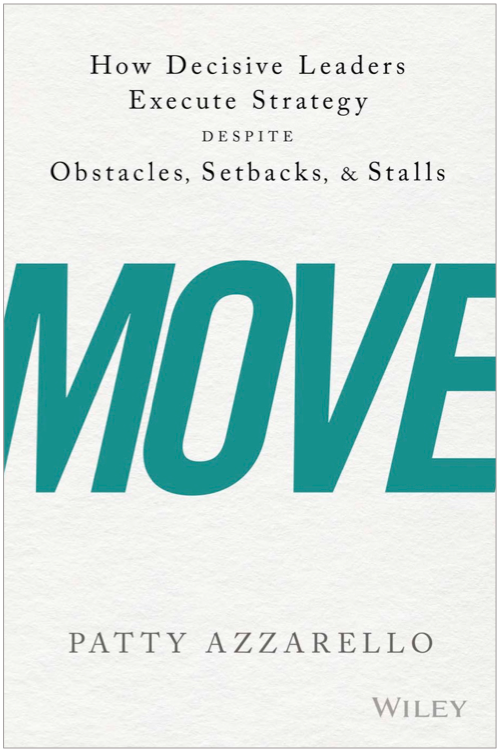Now that the dust has settled a bit about Marissa Meyer’s controversial “no working from home” policy at Yahoo!, I thought I’d weigh in.
Many companies provide work-from-home options. Employees love it.
But many managers struggle with it. They ask me about this all the time — How do you optimize motivation AND productivity?
There are two important thoughts here:
1. Individuals can be more productive working at home, but TEAMS can’t.
Teams are always LESS productive when people are not together.
2. Productivity declines, more often than not, because because management is unclear on expectations and measures — it’s not just that people at home are slacking off.
Have a specific plan for both individual and team productivity
If you want your work-from-home policy to work, get very clear about both individual and team goals.
Figure out what things the team must be together to work on, and what things will be optimized by individuals working from home.
Establish clear desired outcomes, schedules, and priorities both for the individuals and the team.
Here are some ideas that work well for me:
1. What does the team need?
Have your team work together to define clear team goals. What things does the team need to work on together as a team? How often? What does the team need to learn as a team?
Plan and structure in-person meetings and office days around achieving those specific outcomes.
Team time is important for collaboration and idea generation. It’s important for problem solving and process improvements. Team time is also important to have discussions about what people are worried about, answer questions, and calm uncertainty.
2. Productivity comes from clearly defined outcomes
If you define clear desired outcomes for content, schedule and quality, and employees deliver, it should not matter where they do the work.
If you’ve given an individual clear direction on required outcomes and defined stretch goals, you never have to make a personal judgement about whether someone is working hard or slacking off.
Clearly defined and measured results tell the whole story.
But if you are vague on expectations, productivity will decline. You get what you measure.
3. Approve specific work-from-home days
Designate specific work-at-home days of the week, for specific people, to optimize the right people being in the office together at the right times.
Require pre-approval for specific work-at-home days vs. people having the expectation that they can just send an email on any given day saying “I’m working at home today”.
4. Avoid Fridays
Here, I realize I am risking an unpopular point of view…but if you are a manager worried about general productivity — it can help to designate fridays as an in-the-office day.
If people are getting the work done, you shouldn’t care if they stop early on Fridays. But if performance is suffering, you might want to consider treating Fridays as a team day.
You can always separately offer to your top performers to go home early on a Friday.
Don’t confuse achieving business outcomes, with giving perks. Do each on purpose.
5. Consider Mondays
Monday can be a great day for people to take advantage of undistracted thinking and planning time away from the office.
If you have a staff phone call first thing on Monday mornings, you can kick off the week, and reiterate strategic priorities and specific expectations. Then people can get a less chaotic and more purposeful start to the week, instead of just getting swept into a stream of tactical activities.
6. Providing flexibility is a good thing
One of the reasons people like working at home is that they feel in control and they feel trusted. That is good for productivity.
I am a big believer in treating people like humans (not “resources”) and acknowledging that they have a life that matters outside of work.
If you give people schedule flexibility to deal with daily daycare drop-offs and pick-ups and school events, or allow them time away to care for sick family, in my experience they become much more motivated, loyal, and productive.
People will move mountains for you when you really need them to, if you respect them as people, and don’t force them to be in the office on a very specific, lock-down schedule when it doesn’t matter.
7. Is your team never in the same building to begin with?
You can’t let a lack of physical presence keep you from establishing team camaraderie, and building team performance. There are some specific ideas for you here.
Back to Yahoo!
I would assume that Marissa Meyer, who has a big turn-around to execute, is advocating for more team time and clearer measures. A more specific, and individually targeted, work-from-home policy that supports both team productivity (in the office) and individual productivity (at home), with clear goals and measures for each, will most likely evolve at Yahoo! over time.
Was this useful?
If you found this article useful, please help me share it with others and encourage them to subscribe to this Blog for free.
About Patty
Patty Azzarello is an executive, best-selling author, speaker and CEO/Business Advisor. She became the youngest general manager at HP at the age of 33, ran a billion dollar software business at 35 and became a CEO for the first time at 38 (all without turning into a self-centered, miserable jerk)
You can find Patty at www.AzzarelloGroup.com, follow her on twitter or facebook, or read her book RISE…3 Practical Steps for Advancing Your Career, Standing Out as a Leader, AND Liking Your Life.




